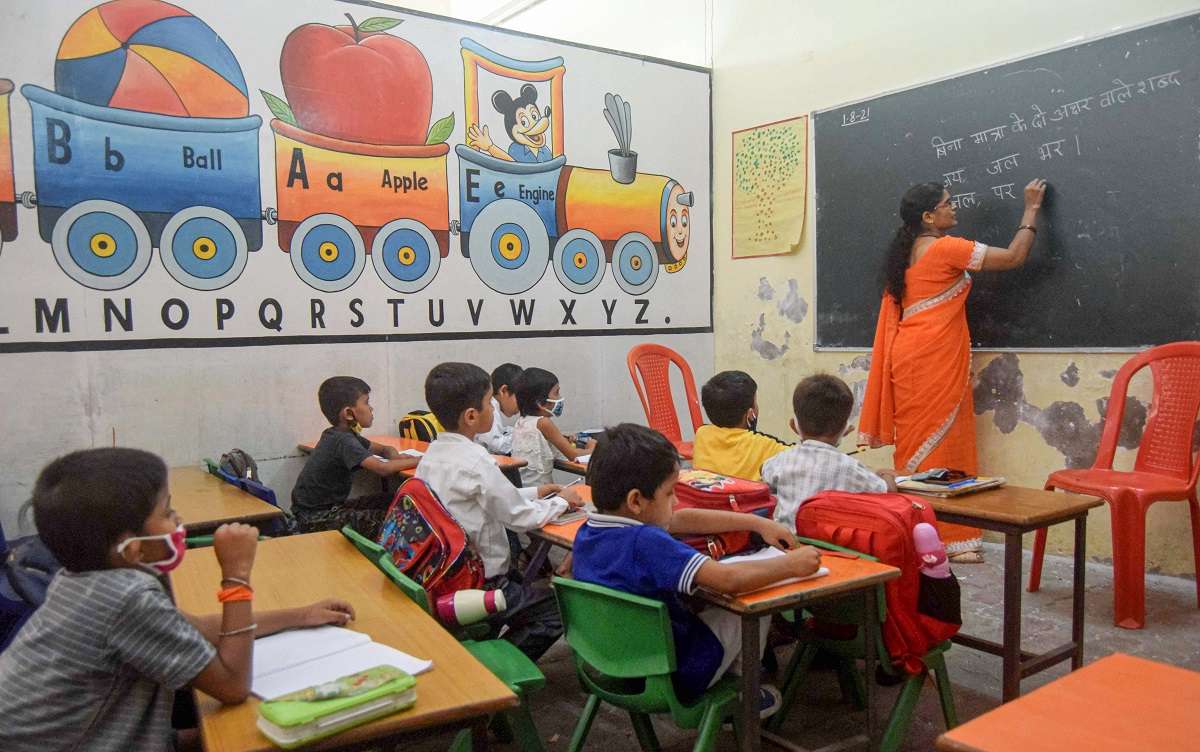)
Online education has a mountain of problems in India but it can become accessible, inclusive if states are more proactive
FirstpostThe online education space in India has been catching up for a few decades now but it has been largely used for skilling and is buoyed by self-learning. Earlier, the mute button was at the teacher’s end and we could mute students who interrupted class but with the new Microsoft Teams for education app, some children play truant and won’t answer when a question is asked as the mute button is in their hands now!” Not all teachers are tech-savvy: Mona Mahajan, who teaches at an IB school said that many teachers in the school do not have laptops or are familiar with the digital medium. VIBGYOR Group of Schools, which is present in 14 cities across India, recently conducted a survey among the parents across India regarding online education and found only a minute percentage of respondents had reservations with regards to internet connectivity, hardware issues, duration of the classes, ability to assist their children and software incompatibility and too much overall screen time including education. The channel is available free on cable networks, over the internet and direct-to-home all across the state as the education department was worried about a section of students who lacked facilities for online classes. One advantage online classes have is that students can ask questions in the comment section and the teachers will respond to it unlike a class on TV where the teacher does not know if the student has grasped the content or not,” he said, adding that despite these issues what is important is that students are able to keep up with their studies during lockdown crisis.
History of this topic

Students in slum areas face accessibility challenges as Delhi schools go online
Hindustan Times
‘Schools have made joke of entire education system’
New Indian Express
Unlocking Opportunities: The Transformative Power of Online Education in India
The Hindu
How EdTech is Transforming Teaching and Learning in India - News18
News 18
Bridging the digital divide in India's education landscape demands a multi-faceted approach
India Today
From Pandemic Necessity to Future Revolution: Why Online Education is Here to Stay
News 18
International Day of Education: Why digitalisation of education in India is important for higher education
India Today
Amid chill, Delhi private schools switch to online classes
Hindustan Times
Top 5 higher education trends for 2023
India Today
The case for online learning
The Hindu
Andhra Pradesh: Multiple issues confronted students in Prakasam during Class X and Intermediate exams
The Hindu
West Bengal Colleges Go Online Again After State Government’s Diktat Over Heat
News 18
The pathology of school closure in India
The Hindu
EdTech: The new growth catalyst of Indian education industry
India Today
Online classes option must be offered till February end, says Telangana HC
Deccan Chronicle
Online lectures increasingly used to cut costs: Student unions
NL Times
Year-ender 2021: How Covid-19 pandemic enabled EdTech to become leading sector for growth
India TodayChildren and schooling in the post-COVID-19 era
The Hindu
Kerala Ahead of Other States in Providing Online Education: Pinarayi Vijayan
News 18
How teachers in India adopted hybrid learning during Covid
India Today
School Closure, Digital Divide, Learning Gap: Post-COVID India Needs Resilient Education System
News 18
Rajasthan governor stresses on bridging digital gap for students in rural areas
Hindustan Times
Rajasthan governor stresses on bridging digital gap for students in rural areas
Hindustan TimesMany schools in rural areas stop online classes
The Hindu
Not just students, teachers too had their share of struggles switching from offline to online classes
India TV News
Worried parents take a stand for safety of their kids
Deccan Chronicle
Virtual Schools to Alternative Academic Calendar: Education Minister Launches Key Initiatives of NEP 2020
News 18How online learning can revolutionise and reform Indian higher education
The HinduData | Only 1 in 4 teachers in India trained to teach online classes
The Hindu
Online classes: Students offhand, teachers at a loss
Deccan Chronicle
Kerala Government launches new digital app for online studies
India Today
When students can’t study
Hindustan Times
3.1 million students from Classes 1 to 10 do not have online learning gadget access: Karnataka
India Today
Syllabus reduced by 30% for Classes 9, 10 due to digital divide: Odisha govt
India Today
Govt to ensure students get access to online studies amid pandemic: Karnataka HC
Hindustan Times)
The Balancing Act of Online Schooling
News 18)
Offline Education for Schools in 8 Gujarat Cities to Stop from Friday Amid Surge in Covid Cases
News 18
84% of teachers facing challenges during online classes: Survey
India TodayThe blank pages in India’s online learning experience
The Hindu
Effective digital tools and learning methods for rural govt schools revealed in teacher survey across 6 states
India Today
Revolution of Online Education: Advantages And Disadvantages
India TV News
How Covid-19 paved the path for EduTech evolution in 2021
India Today)
Not Permanent Fix: American Children Opting Online Classes are Flunking Them
News 18What challenges do online classes pose?
The Hindu
Maha govt to ensure online education for specially-abled students: Bombay HC
India TodayStudy highlights online education woes
The Hindu
How to ensure that students get the best of conventional and online learning
India Today
Online education now troubling students' eyes, government takes note
India Today
Explained: Will online classes blur the lines of quality of education between govt schools and private schools?
India Today
Covid-19 impact: Is it enough to simply introduce technology and infuse it into a current educational framework?
India TodayDiscover Related














































